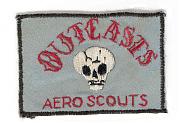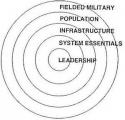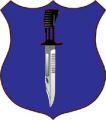The Canadian Forces already have tanks, armoured vehicles and helicopters at their command in their battle against the Taliban in Afghanistan. They are about to add one more item to their arsenal - the donkey, perhaps the humblest of the beasts of burden.
Yes the donkey corps, for lack of a better name, is in the plans for next summer.
Even those involved in the project see the humour of going back to basics in an era of high-tech weaponry.
"You can't have a project like this that you don't laugh at a bit, but it has the potential to be very successful and, like a lot of things we do, we're adding another arrow to the quiver," said Capt. Chris Quinlan.
The terrain is one of the major challenges facing Canadian and coalition troops in Afghanistan. There are mountains, irrigation canals, grape fields, mud walls around compounds, and wadis - a dry riverbed that contains water only during times of heavy rain.
Roadways can be limited and narrow, meaning the Taliban can easily place improvised explosive devices that can prove deadly to vehicles carrying Canadian and Afghan soldiers.
The other problem is the heat during the summer months. The temperature can hit the 50s, even 60s.
"Last summer we were up to 55 degrees Celsius, so you're looking well over 100 degrees Fahrenheit," said Maj. Charles Jansen, the self-proclaimed "Ass-Master" spearheading the donkey brigade idea....
More on link




 )
)









 If it is their war, then some of the "modern" stuff may not be either available or appropriate. If I may refer to the El Salvador experience here, one of the problems faced by the ESAF was an effective means of pursuit of fleeing FMLN bands. Helicopters would have been the best solution but ESAF didn't have enough and the USA wasn't going to supply them with sufficient numbers. I proposed to my boss a concept of mounted infantry (as distinct from cavalry) using lots of cheap ($150 each) horses with the point rider wearing blast chaps and blast booties as a defense against mines. If a horse took a mine he would be destroyed on the spot and the point rider would mount a new horse and keep going. The pursuit column wouldn't be slowed at all. Couldn't sell it because my boss only saw helos as the solution (oh, and he was a personal friend
If it is their war, then some of the "modern" stuff may not be either available or appropriate. If I may refer to the El Salvador experience here, one of the problems faced by the ESAF was an effective means of pursuit of fleeing FMLN bands. Helicopters would have been the best solution but ESAF didn't have enough and the USA wasn't going to supply them with sufficient numbers. I proposed to my boss a concept of mounted infantry (as distinct from cavalry) using lots of cheap ($150 each) horses with the point rider wearing blast chaps and blast booties as a defense against mines. If a horse took a mine he would be destroyed on the spot and the point rider would mount a new horse and keep going. The pursuit column wouldn't be slowed at all. Couldn't sell it because my boss only saw helos as the solution (oh, and he was a personal friend ).
).





Bookmarks